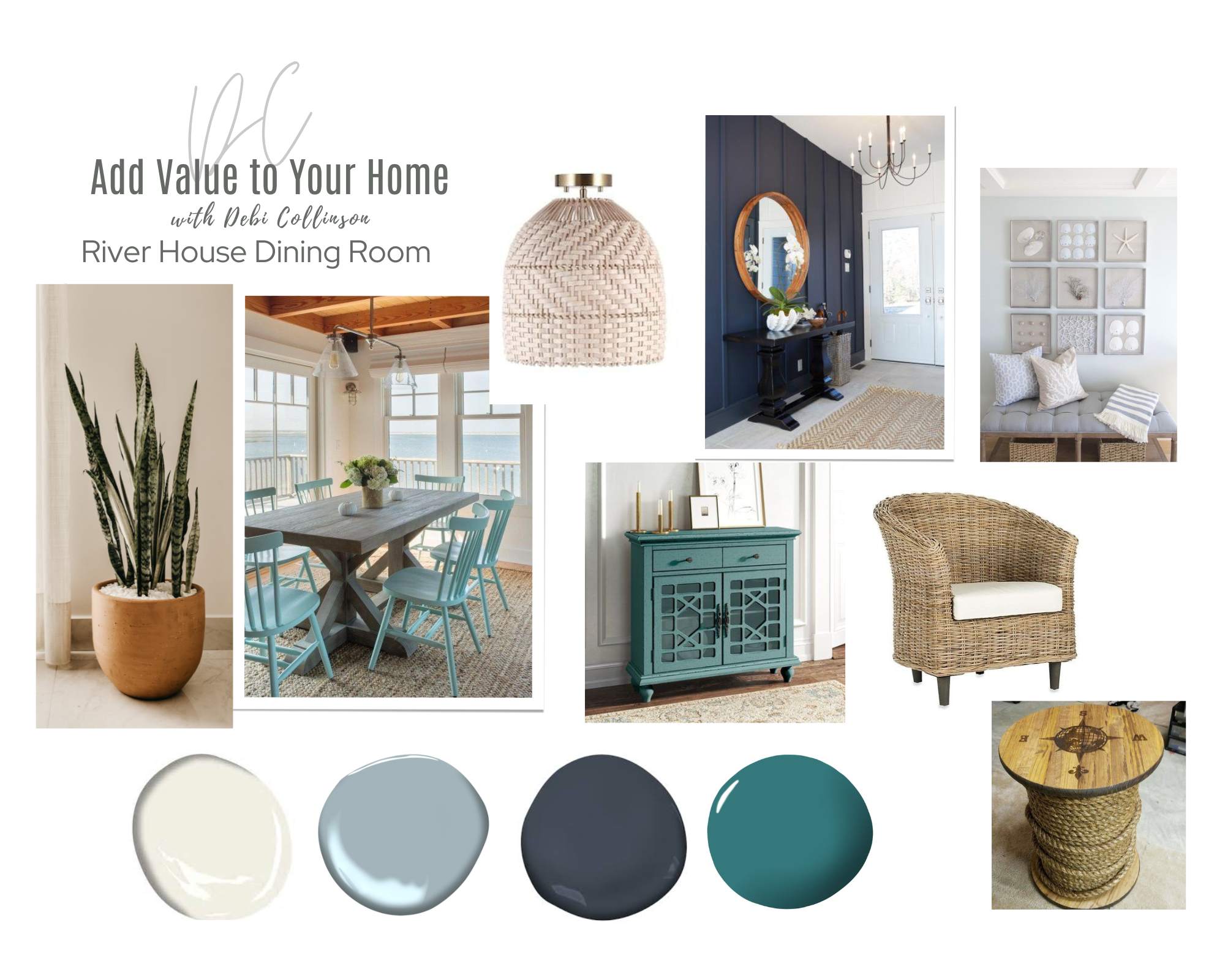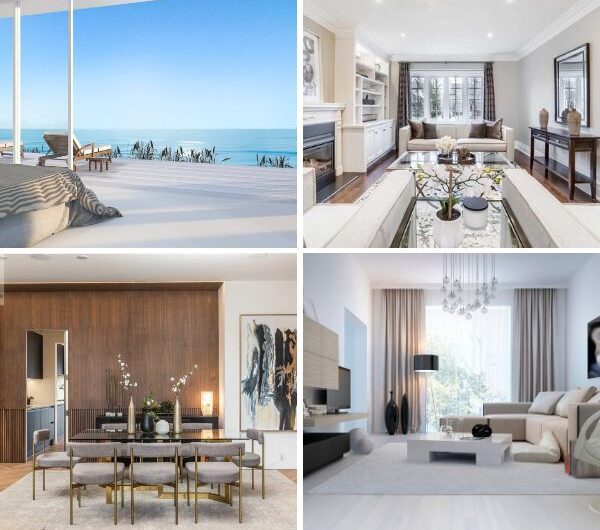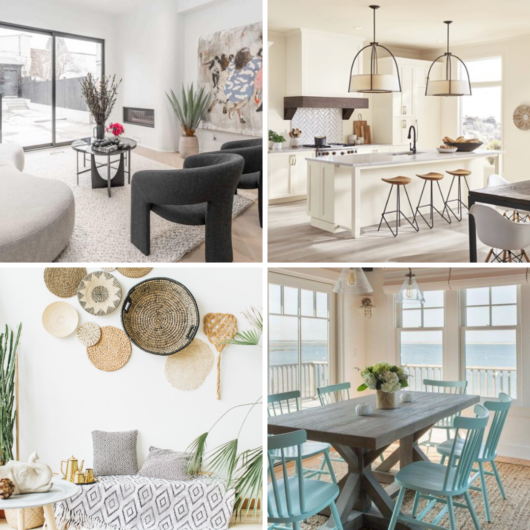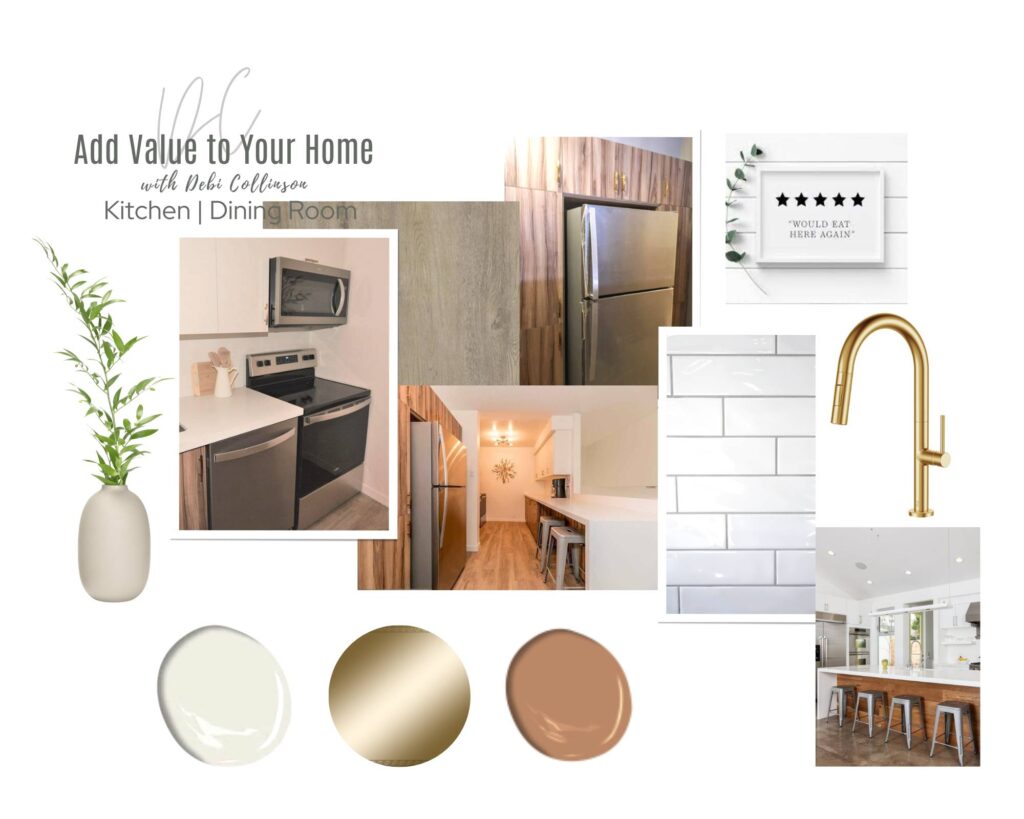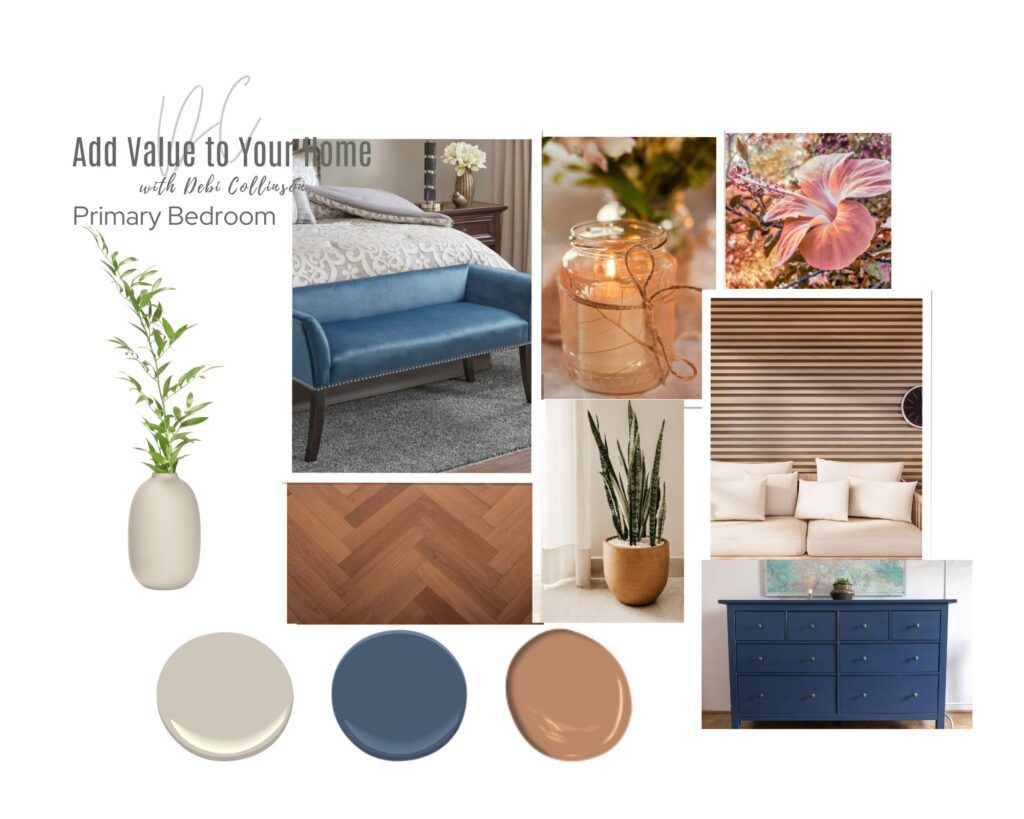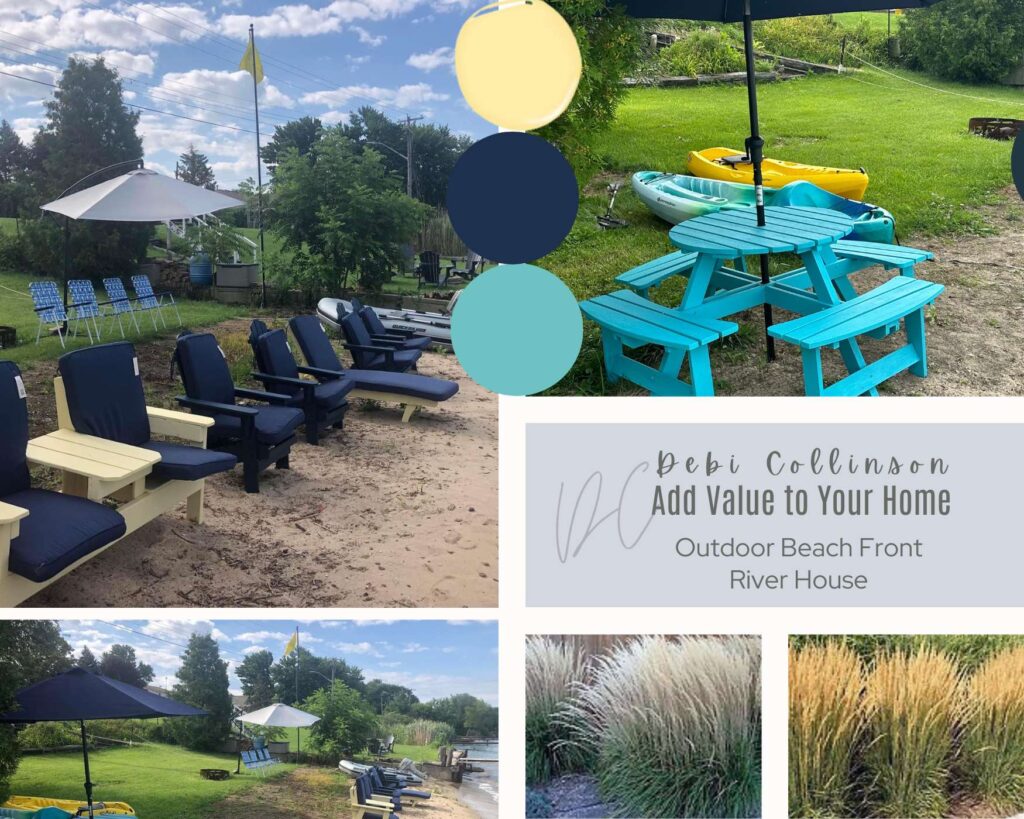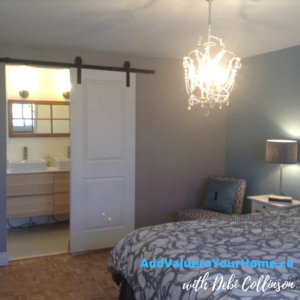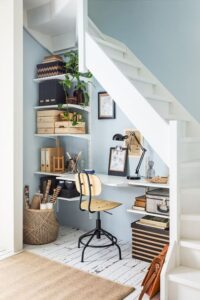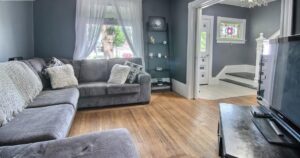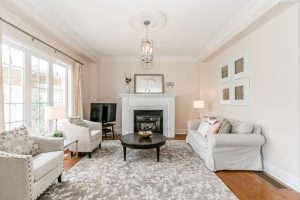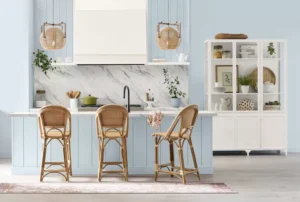Why you need to create a mood board for your room design!
A few years ago, a client asked me for some help. She had just purchased some pretty wallpaper and was wondering what would be the best room for it. We went through her house, room by room, to find its new home. Their house was a charming century old house with lots of personality, but it looked like it had been thrown together. Her home was filled with unique and interesting pieces of furniture & accessories. The challenge was, is that they many of them didn’t always work with each other and it left some rooms feeling disconnected.
We went into the family bathroom which was recently renovated and it was gorgeous. It looked like it came out of a magazine. Her daughter has piped up that she had taken the bathroom design upon herself to design and execute the plan. It was well thought out and all the elements of the room worked together which resulted in a stunning bathroom.
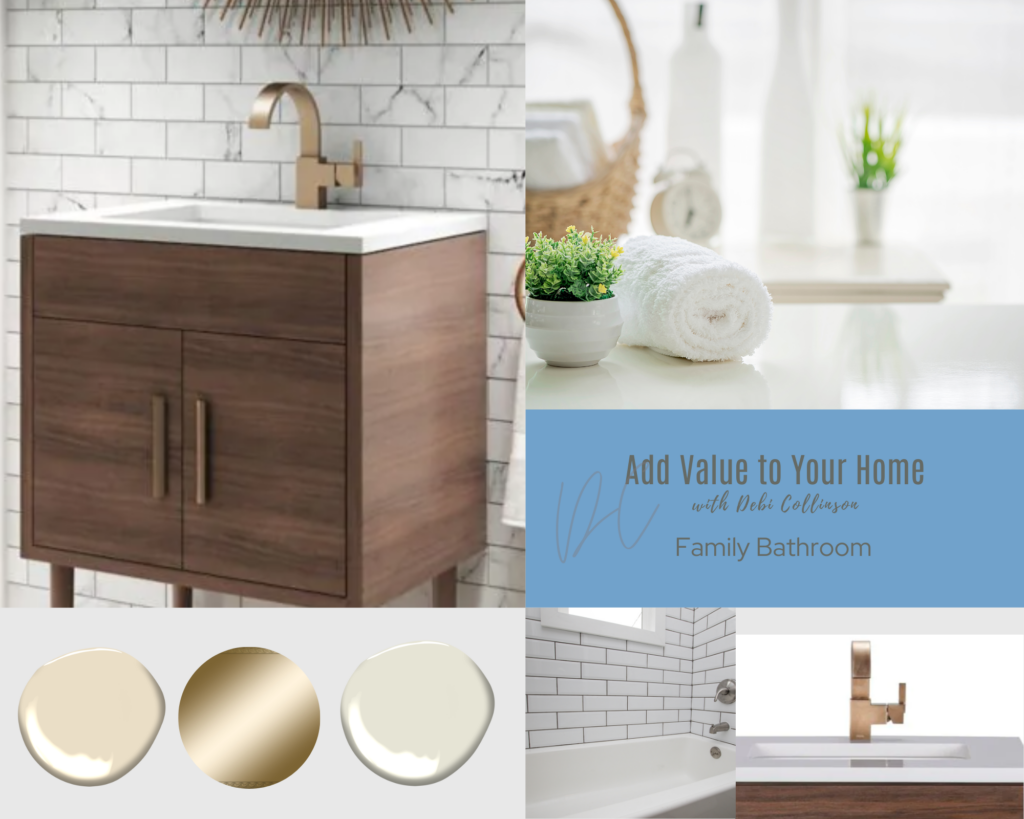
The #1 Decorating Mistake Most People Make
One of the biggest challenges homeowners have when they decorate a room is that they don’t start with a plan. They buy a stunning piece of artwork they see on their travels and put it on their wall. They like a beautiful wool rug they find for a steal at Home Sense so they lay it on the floor underneath Aunt Mary’s oversized hand-me-down couch that is a little frayed on the arms. Furniture and accessories accumulate overtime as they an add item that they like and purchase, or add gifts from well meaning family & friends. It becomes a bit of this and a bit of that. The challenge for most of us is, this method ends up being a hodge podge of furniture and accessories. And when you step back and look at the room, it doesn’t look great. It feels off. Its not Instagram worthy.
When designing a new space, or even adding some elements to a space, its always a good idea to start off with a design plan, also called a design board or a mood board.
What IS a mood board exactly and why do I need one?
A design board or also called a mood board in the design field, is a place where you put your ideas and thoughts of all the elements going into the room. It includes fixed elements like cabinets, flooring tiles, hardware etc. It also should include furniture & accessories like curtains, cushions, tables and any accessories. You need to include your paint colors that you will be using in your space to make sure every part of the design flows together.
A mood board (also known as an inspiration board or a design board) is a collage of collecting pieces together to create a look. A mood board plans the look and feel of the room. It can be a digital collection of pieces using software OR it can be physical collection of pieces like you often see on HGTV shows. Its the process of gathering inspiring pieces together in the early stages of visualizing and planning a room design.
Designers start with a mood or inspiration board to help clients visualize the look and feel of the room before they start to purchase products or choose a paint color. That doesn’t mean there may not be surprises or changes as you go along. Some pieces may stay, some pieces may go, and some may be added to the board along the way. Its a process when gathering ideas for the board but the purpose is to help the homeowner visualize as much as possible, what the end product of the room or space will look like. The mood board will help you acheive the look you’re going for, show you what you need to do to get there, and help you budget and monitor the process as you move along.
You can create a mood board digitally in a software such as Canva or Powerpoint. You can upload a picture of a rug or couch etc. that you are keeping from your room and add additional pieces, paint colors etc. as you search online stores for other pieces to add to your desired look. Pinterest is another great way to search for ideas for your room by creating a board specific to that room. At one point, however, you may want to digitally put these pictures together so you can see in one spot how they coordinate and flow with each other.
It is also possible to do this visual physically for those that prefer the actual look and feel of a product before you buy it. The next time you’re watching an HGTV show, see how the designers “casually” pull together a mood board at a store. For a kitchen renovation for example, they’ll bring the kitchen cabinet and paint colors for the kitchen they’re designing. At the store, they’ll add the counter top, floor tiles, backsplash, cabinet pulls, lighting, and voila, they’ve created a mood board on the spot. Yes its a TV show and a bit staged, but you get the point.
How to make a mood board for interior design
1. Start with an “inspiration piece” to design your room
So where do you start you ask? To start decorating a room, you need an inspiration piece. It can be an element of the room like a fireplace, an amazing view or stunning light fixture. One client of mine had the most stunning chandelier that I’ve ever seen in their dining room. It was the focal point of the room. In a kitchen or bathroom, it can be a tile, a countertop or existing cabinet piece.
It can be a stunning picture, a family heirloom, or a drop dead antique that you’re going to refinish perhaps. Mementos from your travels like a Moroccan carpet, a sculpture or memorable artwork could be your starting inspiration. When choosing your inspiration, be sure that your piece will be around for years to come.
Be cautious about basing your entire room design on a fabric cushion that could get easily stained and destroyed a couple of years down the road. If your inspiration piece gets destroyed, the reason that your room is pulled together will be gone. It can be difficult to replace an inspiration piece with the exact style and colors you need years down the road.
Now that you have your “inspiration” piece, you can pull your room together using a design board.
Read: 5 ways to create a focal point in a room
2. Define your style
The next step in designing a mood board is to define your style. This can be both fun & tricky.
The challenge my client had, is that she didn’t have a defined style. She picked out items at the store that she liked which alot of us do if we’re honest. There was nothing wrong with the items she picked, and in fact, the wallpaper she had picked out which started this whole consult in the first place was gorgeous. But it was flowery & ornate which didn’t go with the area that she had bought it for.
This is where it can be both fun & tricky. Is it traditional? Contemporary? Transitional? Boho? Eclectic? Mid-century? Costal? Asian Zen? Industrial? Traditional? Scandinavian?
Or perhaps you have two design styles???
Once you have narrowed down your design style, it will be easier to choose furniture, accessories, fixtures and colors once you know your style.
Read: What are Interior Design styles and how do I pick one for my home?
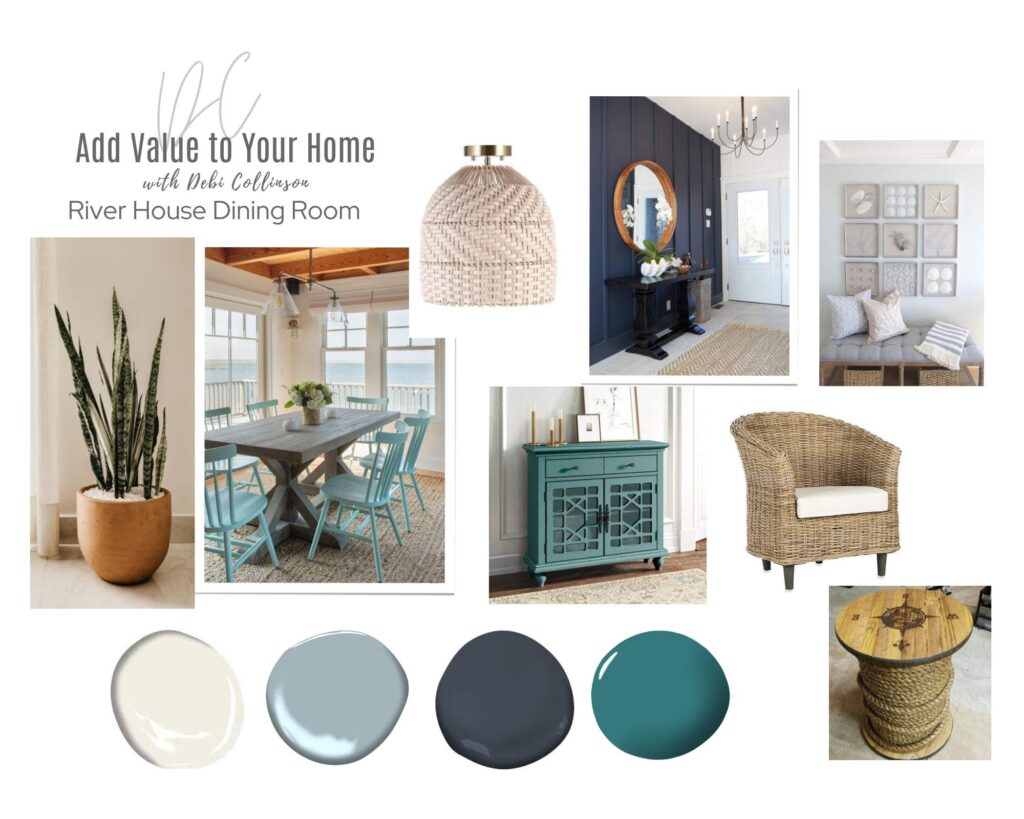
I created the above mood board for a coastal dining room that has an amazing view of a river. The gorgeous river view was the inspiration piece for this mood board, and the colors flowed from the coastal | beach look.

3. Decide on your color scheme
To pick out your color scheme, you should pick out a neutral first. Typically one picks a neutral paying attention to the fixed elements in the room to be the guide as to which neutral will be best suited for the room.
Once you have picked your neutral, then you can choose your secondary colors for your room that you can for an accent wall, rug, furniture, cushions, artwork etc.
Let’s say you picked up a rug that you purchased in Morocco while on vacation. You want to keep your current sofa so we’ll add that into your design. The neutral couch can be “dressed” appropriately with the right accessories. Picking up the cream, copper and navy tones in the carpet, let’s search for fun and inviting accent chairs that would give the room a bit of pop since the couch is quite neutral. Using the rug, your inspirational piece, we need to develop Using blue and orange (or copper) is a popular complimentary color scheme that is easy to use and gives the room a vibrant look.
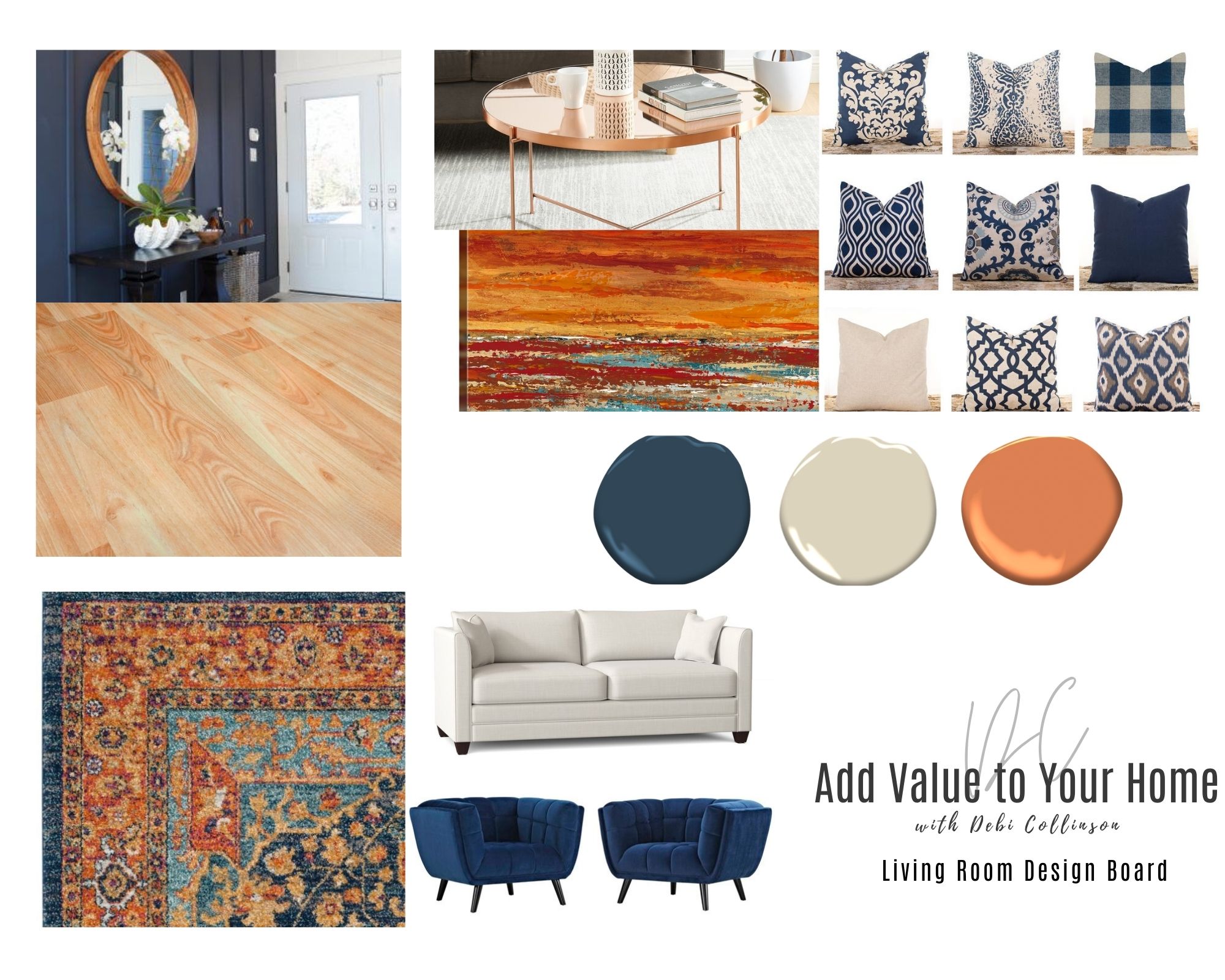
The accent wall design came next to create a focal point in the room. The paint colors were pulled from the carpet. The painting in blue, orange and cream pulls from the same colors of the carpet. The picture colors complements the rug. Orange and blue are opposite colors on the color wheel so it always makes a powerful statement. If you want something less of a statement you could choose the greens, teals and navy blue from the carpet and use these colors instead. You could add a orange cushion to pop the color as well.
A medium wide plank floor is recommended as it blends in with the style and accessories and is currently the leading trend in hardwood and vinyl flooring right now. With the mood board, it gives you a good idea of how your living room is going to look. A deep navy blue accent wall is added to anchor the off white couch.
Put pictures of any furniture, accessories or fixed elements of your room that you are thinking of keeping first. Then you can add or delete other pictures as you go.
Let’s say you’re thinking of keeping your own coffee table but you’re not sure. You can replace it with this cooper one to see what it looks like. You want a different picture? Search for different pictures and swap it out. You get the idea.
You can create a mood board using Canva, a virtual board with Pinterest, or almost any word processing software. Just add or delete pictures and colors until you get the look you want.
Read: How to create a whole house color scheme
4. Choose your fixed elements, furniture & accessories for your space
If you’re designing a room like a kitchen or bathroom, you always want to start with the fixed elements first like cabinets, countertops, flooring and your hardware like faucets, handles, lighting etc. Kitchens and bathrooms are expensive projects and you want to make sure you like the look BEFORE you buy your countertops or cabinets etc. Its a good place to start.
The next step for designing expensive renovations like kitchens and bathrooms is that you will want to physically put these products together like you see on the HGTV shows. The designer will bring a cabinet door, hardware, countertop sample, flooring sample and anything else related to the homeowner so that they can actually see the physical products together.
Create a Mood Board for any Area in Your Home
Mood boards are not just limited to a room. The above mood board on the right is for a client that I created for their beachfront area. We brainstormed ideas on furniture and landscaping to add too and keep the natural casual feel of the beach front.
Whether its a kitchen, an outdoor room, or a basement media, its always a good idea to develop a mood board. That way you can group pictures and colors together to see what you like and more importantly, what you don’t like. You may have to go back to the drawing board a couple of times and add different items in when you see it all together. Perhaps you were going to keep an old couch but once you see your entire design, you’ve changed your mind and that’s ok too. Be creative! Have fun with it!
Related reads to designing your space:
Read 5 ways to make a focal point in your room
Read 5 mistakes homeowners make with their furniture
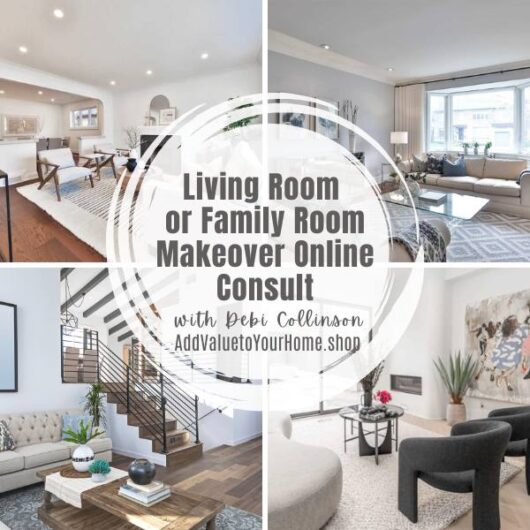
Does this sound overwhelming? I can help you with that!
You’re not happy with your current living room, bedroom or office. It’s dated. It’s not working for your family anymore.
You have some ideas but you’re not sure where to start or how to pull it all together. Some or all of the furniture needs replacing but you’re not sure what to replace and with what. Regardless, you just need a change and need some help and guidance.
Taking into consideration your design style, personal preferences and wishes for your room, you will receive:
- you will receive 2 mood boards with my recommendations of furniture & accessories based on your photos & questionnaire that you sent me
- floor plan using the furniture & accessories as agreed upon and links to recommended furniture & accessories that you may purchase
- paint color recommendation + trim based on questionnaire & furniture and accessories choices
- recommended repairs/renovations of the room
- unlimited messaging
- you will receive a follow-up e-mail to go over any questions you may have. Making sure you’re happy with your consult is important to me.
Check out my Online Living Room or Family Room Design Consult here
I help busy homeowners, just like you, to style their house to make it a stunning retreat, where they can live and enjoy their home.
Hi! I’m Debi Collinson. Designer. Color Consultant & Real Estate Investor.
I conducted my first color consult at the age of 7 lol for my dad. I grew up looking at blue prints, going on construction sites and helping my dad, an Engineer|General Contractor and Co-Owner of a Design|Build|Engineering firm pick out paint colors for his buildings. Since 2006, I have been helping hundreds of clients to homes to make them look like they belong in a magazine page whether the client is styling to stay or staging to sell.
In my spare time, LOL, I buy “fixer uppers” to fix up & either sell for a healthy profit or to rent. I’m currently looking for my 10th “fixer upper.” Sign up to receive my e-mails of how to make your home stunning, how to pick the best colors for your home, and how to add value to your home all at the same time! Check out my full bio including credentials here.
